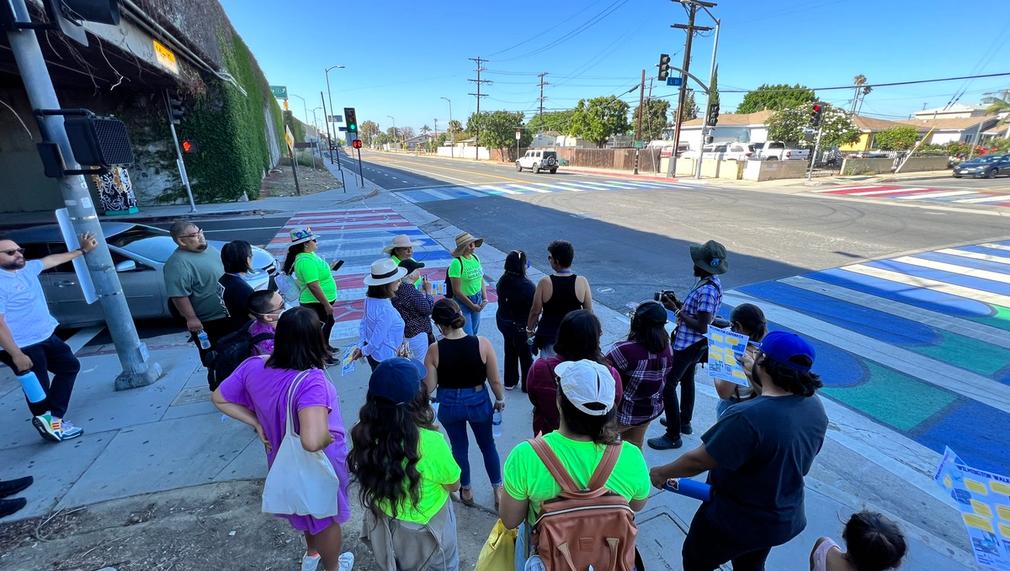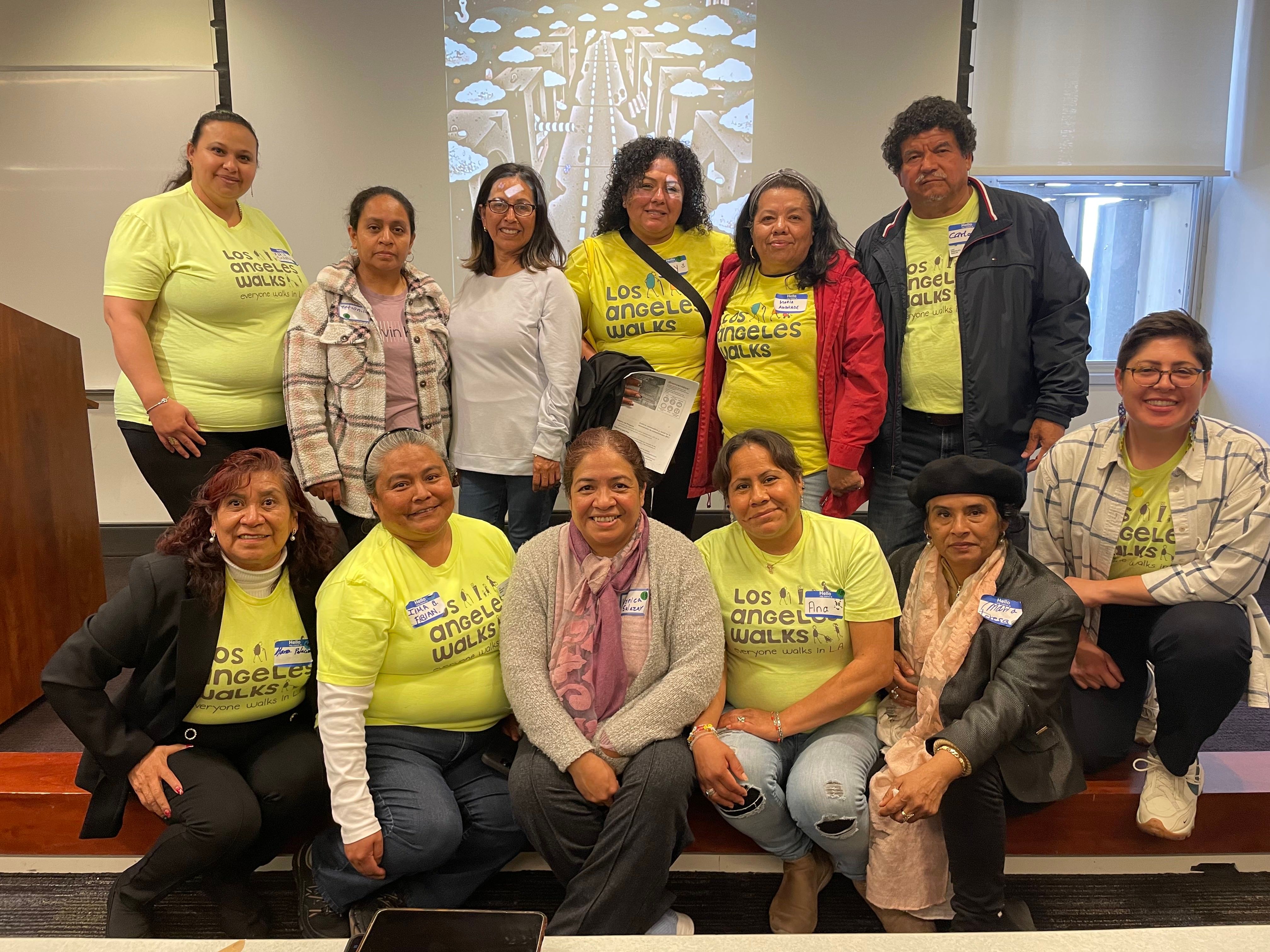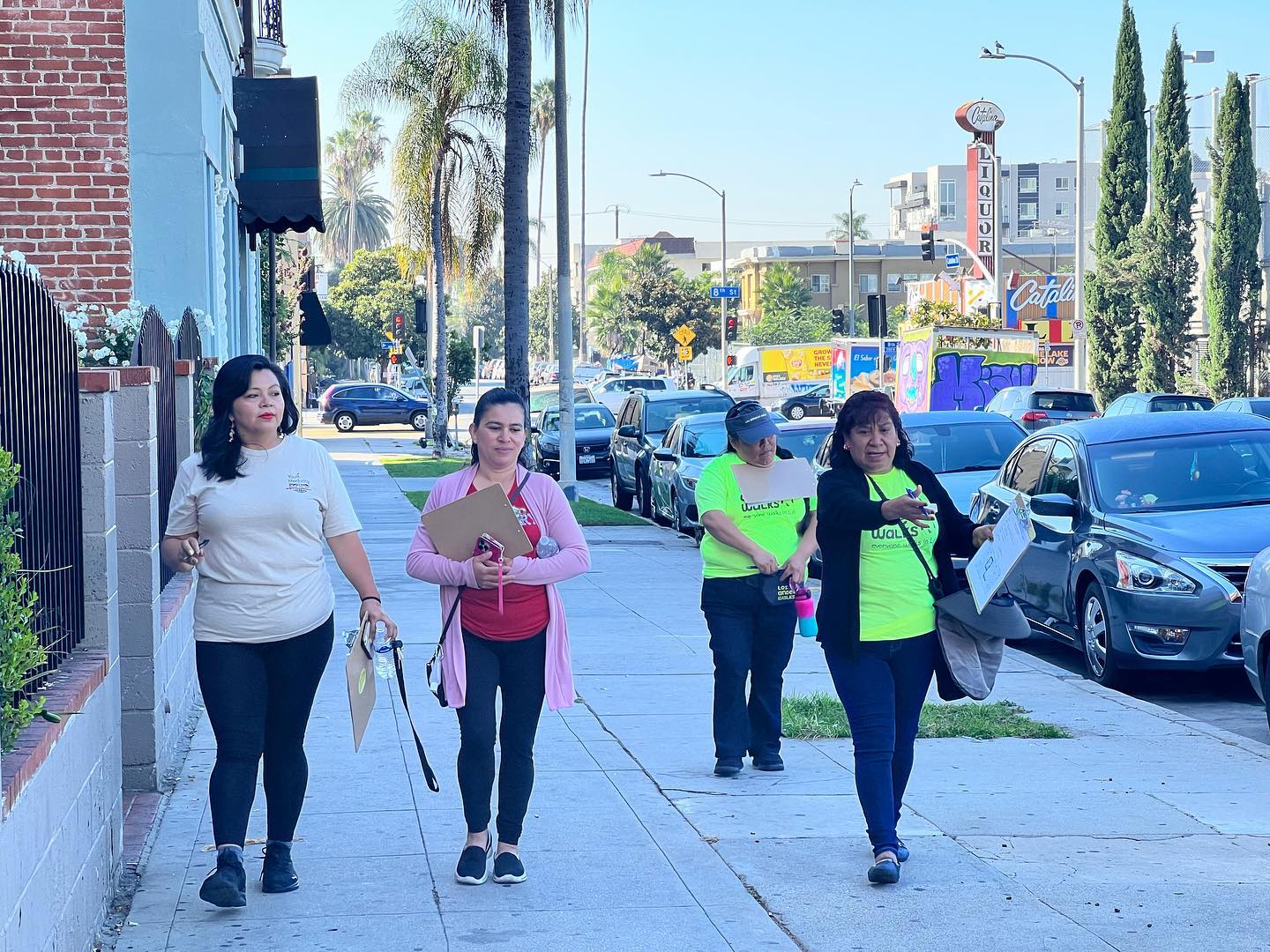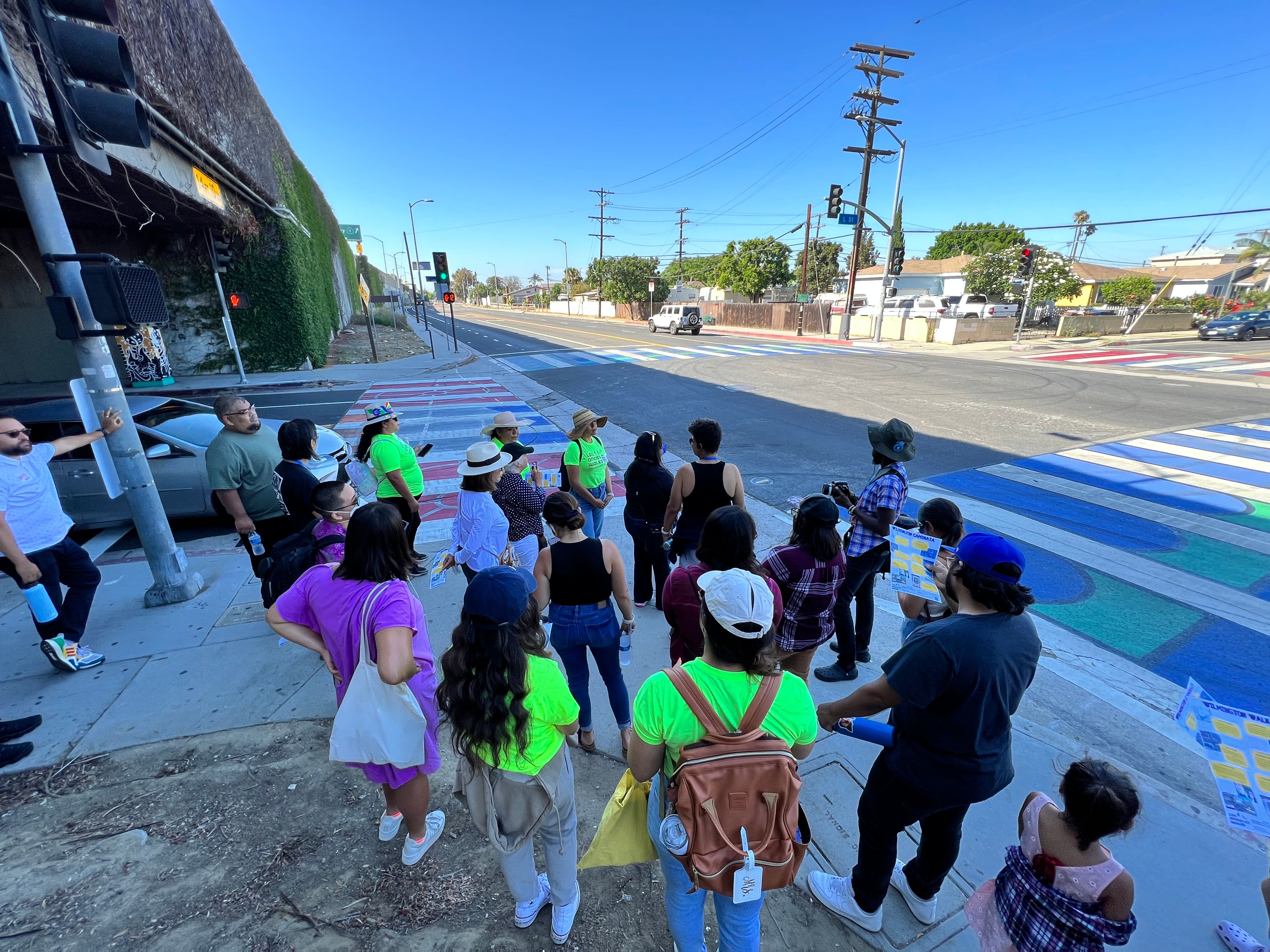Los Angeles Walks
Los Angeles Walks empowers historically disinvested communities to transform streets into safe, accessible, and vibrant places for people who walk, roll, and use transit.We envision a just Los Angeles where everyone—regardless of race, income, age, or ability—can move safely and freely through their neighborhoods without fear of traffic violence.
Visit this organization’s website to learn more

6 Submitted Ideas
 PLAY ·2023 Grants Challenge·🎉 2023 Goldhirsh Foundation Winner
PLAY ·2023 Grants Challenge·🎉 2023 Goldhirsh Foundation WinnerSafe Street Slow Jams
LA traffic deaths are the highest in two decades and dying at record rates are our K-8 students, who are especially at risk, given many of their schools are long wide, fast streets. An effective solution is Walk to School Day activations (Safe Streets Slow Jam), where community members walk students to school and slow traffic with large, attention-grabbing signs and performances. These events create safer streets, educate the public, and give parents critical data that can pressure City officials to implement long term infrastructure change.
 PLAY ·2025 Grants Challenge
PLAY ·2025 Grants ChallengeGreen Streets, Just Waters

Green Streets, Just Waters is a learning exchange that supports frontline advocates from Wilmington in deepening their understanding of water justice by engaging with the history and ongoing impacts of LA’s water extraction from Owen's Valley. Through popular education and storytelling, the project uplifts narratives of environmental harm and resilience while fostering a growing sense of solidarity and shared responsibility across regions.
 PLAY ·2025 Grants Challenge
PLAY ·2025 Grants ChallengeThe 4B’s: Boo-Boo Bandage Brigade
The 4B’s is a public space activation and advocacy campaign in Downtown LA that mobilizes a brigade of mobility justice advocates, artists, CBOs, residents, and disabled Angelenos to demand urgent investment in our city’s broken sidewalks and neglected public right-of-way. Large, 3-foot vinyl “bandages” mark unsafe locations with QR codes linking to a map of repair estimates and tools for action—building public pressure ahead of the 2028 Olympic and Paralympic Games to fix what’s long been broken and center those most impacted in the process.
 CONNECT ·2024 Grants Challenge
CONNECT ·2024 Grants ChallengeStories on the Ground: What Walking Looks Like for Transit Riders

Los Angeles Walks seeks funding to launch "Stories on the Ground," a video-storytelling project aimed at capturing and sharing the first and last mile experiences of LA Metro riders, with a focus on historically disinvested communities. This project will highlight the benefits and challenges faced by these communities, track the impact of recent policy changes regarding policing and street improvements, and advocate for continued investment in equitable transportation solutions.
 PLAY ·2024 Grants Challenge
PLAY ·2024 Grants ChallengePedPower Online: Empowering Safe Street Advocates in Los Angeles

Los Angeles Walks seeks funding to transform its PedPower curriculum into a free online platform, empowering community members, especially in underserved areas, as Safe Street Advocates. Objectives include converting PedPower to a digital format, enrolling 100+ community members, equipping participants with advocacy skills, enhancing learning with multimedia, developing a Policy track with LA Forward Institute (LAFI), and engaging residents through events and promotion.
- 2013 Grants Challenge
“Hey I’m Walking Here!”: A Campaign Celebrating Pedestrians in the City of Los Angeles
"The future of the city is walking. Redesigning our cities for walkers and walking will help make our cities places where people want to be. But it’s not something we consciously think about. So every time you’re out there walking I want you to think “Hey, I’m Walking Here!” — Alissa Walker, Journalist and Los Angeles Walks Steering Committee member, at WIRED 2012 Last December, Alissa’s talk at the WIRED 2012 conference in London became a dinner table discussion at a Los Angeles Walks meeting. We laughed over the clip Alissa referenced from Midnight Cowboy where Dustin Hoffman yells “Hey, I’m Walking Here!” at a fast-moving car rolling into a New York City crosswalk: http://www.youtube.com/watch?v=c412hqucHKw But in all seriousness, shouting “Hey, I’m Walking Here” was far too representative of our own Los Angeles experience—a place where walking doesn’t get enough respect. We found ourselves becoming inspired by other entertaining yet educational stunts that highlighted pedestrians, like a group of pedestrians that actually moved a car which had stopped in the middle of the crosswalk in Brazil: http://www.youtube.com/watch?feature=player_embedded&v=UqhUeDTAyYs Or Peatónito, who takes to the streets in Mexico City as the masked Mexican defender of pedestrians: http://m.theatlanticcities.com/commute/2013/02/if-only-every-city-had-masked-lucha-libre-defender-pedestrians/4804/ We realized we needed the same kind of cultural touchstone for Los Angeles: a movement bringing attention, safety and a bit of fun to walking to help build a healthier, more vibrant Los Angeles Walking is a “magic app” for creating a healthy city. As the most common type of physical activity, walking is an easy and effective way to improve fitness. It reduces body fat and bad cholesterol, cutting the risk of some of the leading causes of death in Los Angeles. Walking extends life—walking 75 minutes per week adds 1.8 years of life; walking 2.5 hours per week adds 7 years of life. Walking regularly also improves mood and reduces fatigue. The benefits of walking reach beyond individual fitness to make communities into healthier places to live, work and play. Walking instead of driving, even for short car trips, decreases air pollution and reduces respiratory and cardiovascular ailments as well as some kinds of cancer. Car crashes are the leading cause of death for Angelenos under the age of 5 and the second-leading cause of death for children and young adults ages 5 to 24. Making the city safer for pedestrians can also make the city more equitable: Most pedestrian deaths in L.A. occur in low-income neighborhoods where many residents do not own cars. But the solution is not simply to get more people walking—it also requires that streets and sidewalks be redesigned to protect pedestrians from roadway traffic, slow down cars and trucks, and keep walkers feeling safe. With these ideas in mind, Los Angeles Walks proposes to launch "Hey, I'm Walking Here!" (or in Español, “¡Ay, Estoy Caminando!”)—a campaign which will not only increase pedestrian safety, but also highlight and celebrate walking as a conscious act that’s happening all over the city. And by expanding upon our existing Los Angeles Walks work including awareness, events, community meetings and action, we’ll be able to support long-term efforts to build a more walkable Los Angeles by 2050. Activities funded through our “Hey, I’m Walking Here!” campaign will include: Creating a bilingual “Hey, I’m Walking Here!”/ “¡Ay, Estoy Caminando!” publicity campaign using posters, stickers, public art, infographics and social media. Authoring “Hey, I’m Walking Here!”/ “¡Ay, Estoy Caminando!” materials which will highlight the benefits of walking as a healthy and civic-minded action. Convening community meetings in three neighborhoods where residents will assess the “good, bad and the ugly” for pedestrian activity, highlighting unsafe or unsavory walking environments to improve on the “Hey, I’m Walking Here” action days. Organizing “Hey I’m Walking Here” action days where local communities will be empowered to make temporary, attention-getting improvements to local walking infrastructure (like a Parking Day focused on pedestrians). Designing a pilot program for a pedestrian-focused urban wayfinding system that also serves as a publicity campaign throughout the city, to help Angelenos to understand the distance between neighborhoods and landmarks, and see that more places are walkable. Holding regular group walks to underscore how walking is a fun way to explore the city and promote healthy lifestyles, where we will provide “Hey I’m Walking Here” materials. Promoting pedestrian parades and events during CicLAvias (WalkLAvia) to make sure walkers have a welcoming space when streets are closed to traffic. Educating local residents about how to ask for higher-visibility crosswalks and lower speed limits on their streets (especially near schools).